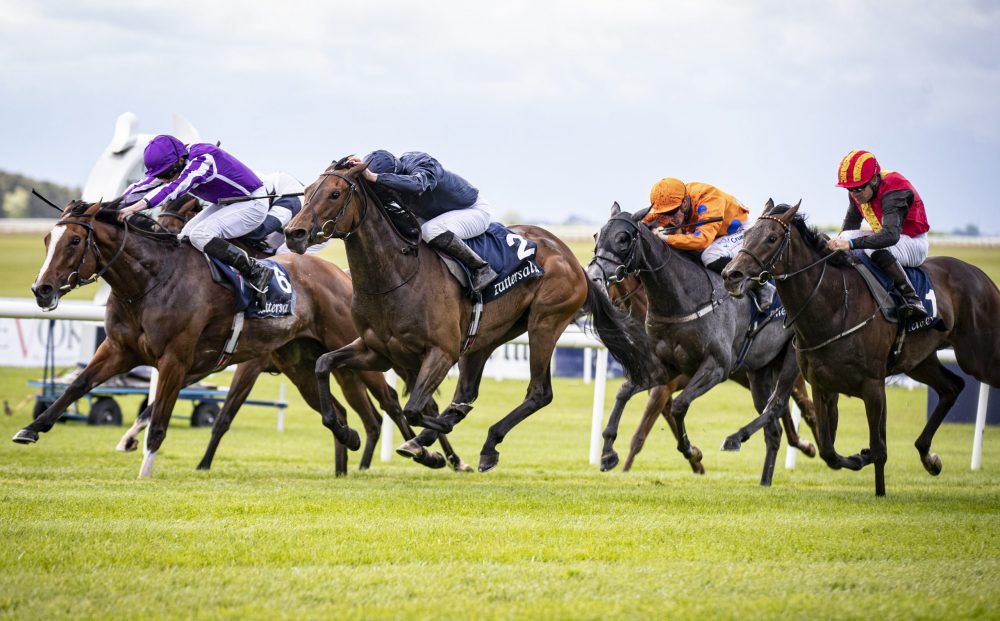
Chant course Horse racing is one of the oldest and most prestigious sports in the world, blending athleticism, heritage, and excitement. From royal families to casual fans, the sport attracts a diverse audience. Whether it’s the heart-pounding gallop on the track or the high-stakes betting culture that surrounds it, horse racing offers something for everyone. This article explores the captivating world of horse racing, including its history, types, global popularity, and modern significance.
The Origins and History of Horse Racing
The roots of horse racing trace back thousands of years, with evidence of organized races found in ancient Greek, Roman, Babylonian, and Egyptian civilizations. The sport evolved significantly in 12th-century England when knights returned from the Crusades with swift Arabian horses, leading to the development of Thoroughbred racing.
Over time, racing became known as the "Sport of Kings" due to its popularity among aristocrats and royals. Formal racecourses began to appear in the 17th and 18th centuries, and horse racing quickly gained popularity across Europe and beyond.
Types of Horse Racing
Horse racing encompasses several formats, each with unique characteristics and appeal:
1. Flat Racing
Flat racing is the most common form and involves horses running on a level track without obstacles. Distances can vary, but the emphasis is on speed and stamina. Races like the Kentucky Derby, Royal Ascot, and Dubai World Cup fall under this category.
2. Jump Racing (National Hunt Racing)
Also known as steeplechasing, jump racing requires horses to race over fences and hurdles. It’s especially popular in the UK and Ireland, with iconic events like the Grand National and Cheltenham Festival.
3. Harness Racing
In harness racing, horses pull a two-wheeled cart called a sulky while maintaining a specific gait (usually a trot or pace). This form is widely seen in North America and Scandinavia.
4. Endurance Racing
Endurance races test both horse and rider over long distances, sometimes up to 100 miles, across varying terrain. It focuses more on stamina and conditioning than pure speed.
Major Horse Racing Events Around the World
Horse racing has a global fan base, and major events draw thousands of spectators and millions in wagers. Here are some of the most famous races:
Kentucky Derby (USA): Known as "The Run for the Roses," it's the first leg of the American Triple Crown.
The Grand National (UK): A grueling jump race with high fences and intense competition.
Melbourne Cup (Australia): Dubbed “the race that stops a nation,” it’s a major public event.
Prix de l'Arc de Triomphe (France): One of Europe's most prestigious flat races.
Dubai World Cup (UAE): One of the richest horse races in the world in terms of prize money.
The Role of the Jockey
Jockeys are as vital to horse racing as the horses themselves. A great jockey must combine physical fitness, tactical intelligence, and a deep bond with the horse. They must understand how to pace the race, when to make a move, and how to handle the horse under pressure. Often, a split-second decision can determine the outcome of a race.
Breeding and Training
Success in horse racing starts long before the horse reaches the track. Breeding plays a crucial role, with Thoroughbreds being the most commonly used breed for flat racing. Elite horses come from distinguished bloodlines, often with generations of champions behind them.
Training is equally essential. Horses are trained daily to improve speed, stamina, and racing temperament. The trainer’s job is to condition the horse while avoiding injuries, ensuring peak performance on race day.
Betting and the Business of Horse Racing
Horse racing and betting go hand-in-hand. Wagering adds a layer of excitement and suspense, making each race more engaging for fans. Betting types range from simple win/place/show bets to complex multi-race wagers like exactas, trifectas, and parlays.
The betting industry is a massive part of horse racing’s economy, generating billions in revenue globally. Many races offer purse money that attracts top talent from around the world.
Technology and Modernization
Modern horse racing is no stranger to technology. Advanced timing systems, video replays, and data analytics enhance fairness and performance assessment. Online betting platforms and live streaming have broadened access, allowing fans to follow races from anywhere.
Moreover, data tracking with wearable tech helps trainers monitor the horse’s heart rate, speed, and stride length, ensuring more informed training and care.
Challenges and Ethics
Like any sport, horse racing faces its share of challenges. Animal welfare is a major concern, with debates around racing practices, injuries, and retirement. Regulatory bodies and advocacy groups work to ensure ethical treatment through improved safety measures, veterinary care, and stricter drug policies.
Racetracks have also begun investing in safer track surfaces, and many owners support retirement and retraining programs for horses after their racing careers end.
The Cultural Impact of Horse Racing
Horse racing has inspired literature, films, fashion, and traditions. Events like the Kentucky Derby are as much about culture and style as they are about sport, with iconic hats and mint Chantcourse.co juleps being part of the fanfare. In many parts of the world, horse racing is deeply woven into national identity and community celebrations.
Conclusion
Horse racing is more than just a sport—it’s a spectacle of grace, power, and history. With roots that span centuries and a presence in nearly every corner of the globe, its allure remains strong. Whether you're a seasoned bettor, a casual fan, or someone curious about its cultural richness, horse racing offers an unforgettable experience. As technology continues to enhance the sport and ethical practices evolve, horse racing is poised to remain a beloved tradition for generations to come.